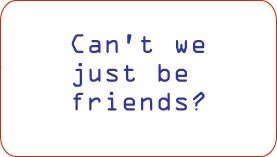 A recent Economist article discusses the relevance of Dunbar’s Number to friending in Facebook, and its relation to the size of social networks, especially networks of close friends. The article addresses a similar issue outlined in an earlier post here on the influence of influentials on Twitter, which focused on findings of a recent study by members of the Social Computing Lab of HP Laboratories .
A recent Economist article discusses the relevance of Dunbar’s Number to friending in Facebook, and its relation to the size of social networks, especially networks of close friends. The article addresses a similar issue outlined in an earlier post here on the influence of influentials on Twitter, which focused on findings of a recent study by members of the Social Computing Lab of HP Laboratories .
In particular, the Economist article highlights the point that increasing the number of friends on Facebook faces (pun intended) constraints unique to group behavior.
…perhaps additional friends are not free. Primatologists call at least some of the things that happen on social networks “grooming”. In the wild, grooming is time-consuming and here computerisation certainly helps. But keeping track of who to groom—and why—demands quite a bit of mental computation. You need to remember who is allied with, hostile to, or lusts after whom, and act accordingly. Several years ago, therefore, Robin Dunbar, an anthropologist who now works at Oxford University, concluded that the cognitive power of the brain limits the size of the social network that an individual of any given species can develop. Extrapolating from the brain sizes and social networks of apes, Dr Dunbar suggested that the size of the human brain allows stable networks of about 148. Rounded to 150, this has become famous as “the Dunbar number”.
As my previous discussion of Twitter highlighted, social media such as Twitter and Facebook provide resources for managing the constraints posed by the Dunbar Number, regardless of the number’s real size, a point of continuing dispute.
The Economist offers additional insight drawn from a study of Facebook friending done by Facebook’s in house sociologist, Cameron Marlow.
Dr Marlow found that the average number of “friends” in a Facebook network is 120, consistent with Dr Dunbar’s hypothesis, and that women tend to have somewhat more than men. But the range is large, and some people have networks numbering more than 500, so the hypothesis cannot yet be regarded as proven.
What also struck Dr Marlow, however, was that the number of people on an individual’s friend list with whom he (or she) frequently interacts is remarkably small and stable. The more “active” or intimate the interaction, the smaller and more stable the group.
Marlow’s findings differ from those of the HP Social Computing Lab team’s analysis of Twitter though. The Twitter study looked at friends receiving @name replies, which in Twitter are still public replies to followers. It apparently did not analyze Direct Messages, perhaps a better analogue to two-way communication in Facebook.
Marlow looked at the rate of postings for men and women in reply to friends’ comments on their photos or their wall, as well as their two-way communication using e-mails and chat. In each instance, though women reciprocate at a higher rate than men, Marlow finds that what goes up in social networking “is not the core network but the number of casual contacts that people track more passively.”
However, regardless of the architectural differences between the two social networks, the observation of Lee Rainie, the director of the Pew Internet & American Life Project, offers on Marlow’s findings ring true. As the Economist summarizes,
Put differently, people who are members of online social networks are not so much “networking” as they are “broadcasting their lives to an outer tier of acquaintances who aren’t necessarily inside the Dunbar circle.”
What do you think about the Dunbar Number’s relevance to social networks?
Share this post…
Posted by Larry R. Irons













I can tell that this is not the first time at all that you write about the topic. Why have you decided to write about it again?
A bit of a strange comment. To answer the question, because it is relevant to a different study.